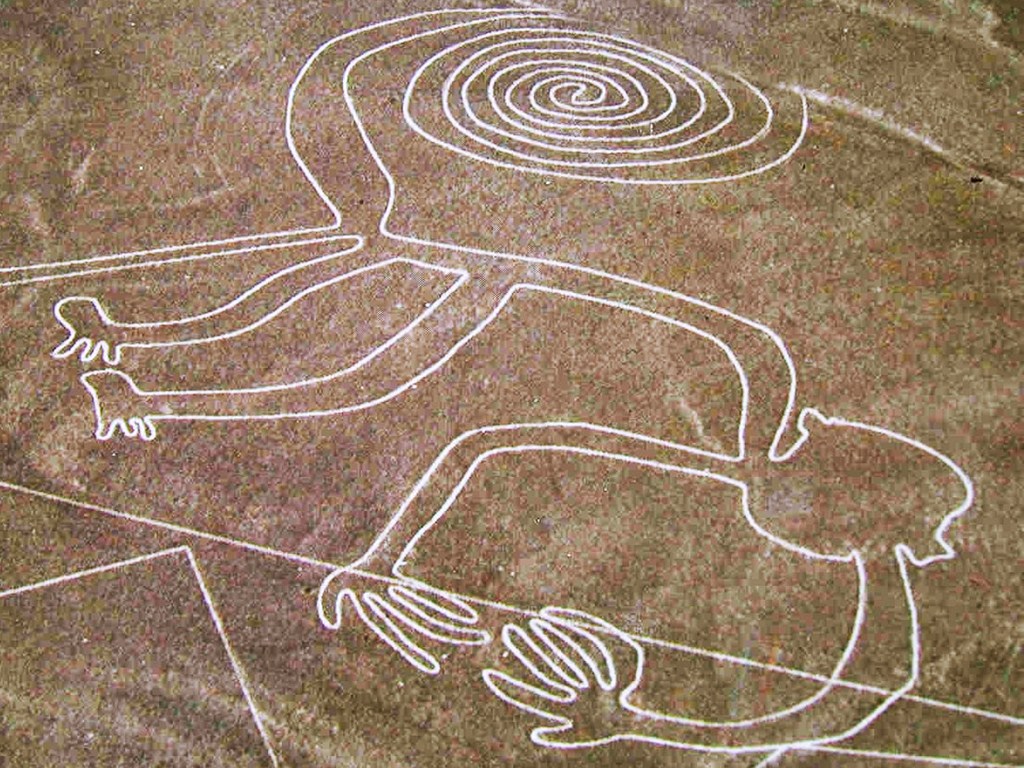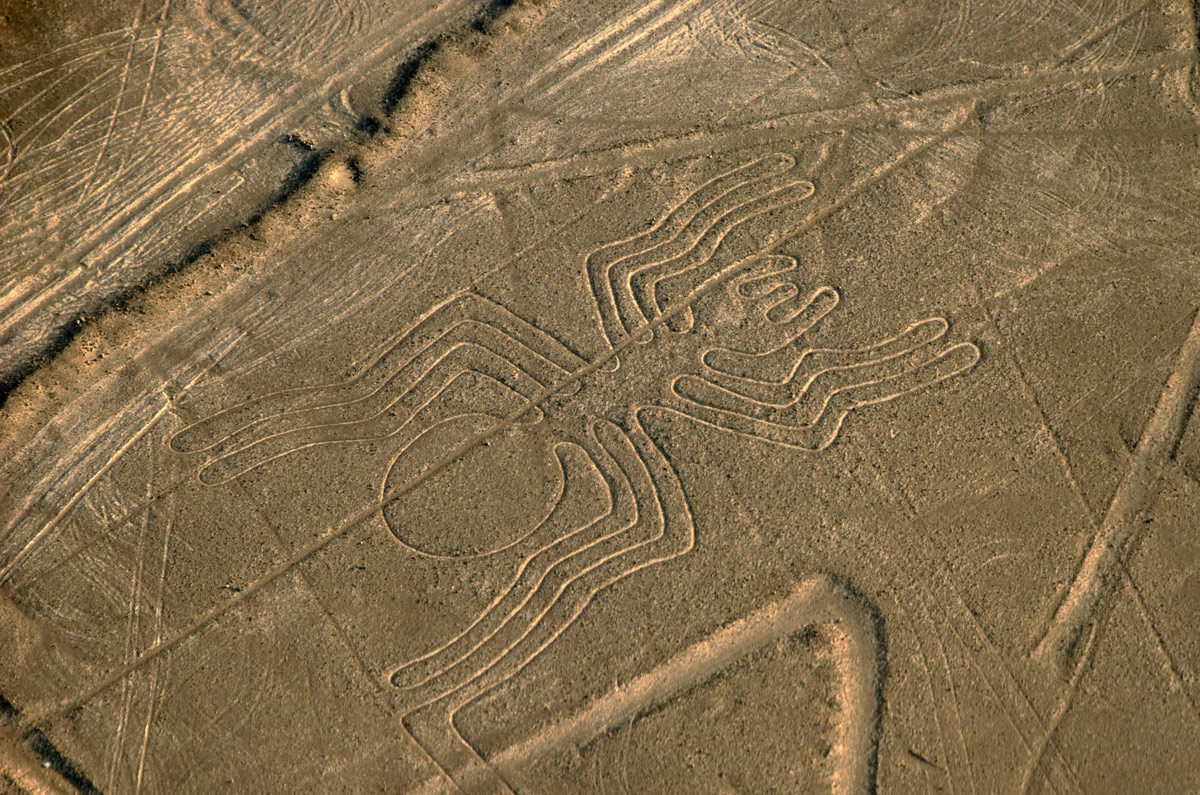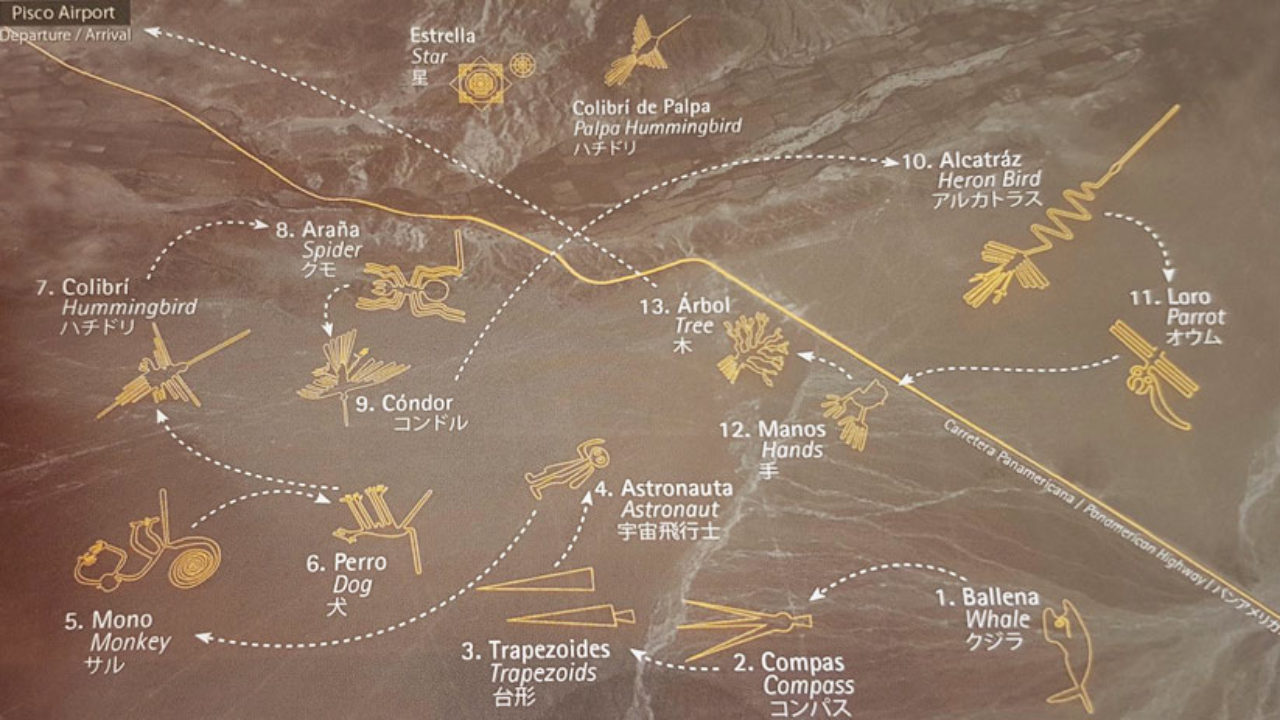You have heard about many unsolved mysteries such as Yonaguni mountains, Bermuda triangle, mysterious islands, crooked forest, the mystery of aliens which are still unsolved. Adding one more unsolved mystery in this list, whose weirdness has pointed towards the existence of the Aliens. They are the mysterious geoglyphs of Peru, Mexico known as Nazca Lines.
Before starting our blog, know what geoglyph is?
Geoglyph is a large line pattern designed on the ground and typically formed by clastic rocks or similarly long-lasting elements of the landscape, such as stones, stone fragments and sand. This will help you in getting a clear thought of Nazca Lines.
Let’s try to understand what is the Mystery of Peru’s Nazca Lines-
Nazca Lines
The Nazca were an ancient civilization of Peru that gained popularity after the discovery of mysterious Nazca lines. The Nazca Lines are geoglyphs situated in an arid coastal area of Peru that cover an approx area of 450km² and are a collection of giant geoglyphs figures carved inside the ground. It is believed that they were created by the ancient Nazca culture in South America and representing various shapes plants, around 70 animals including spider, hummingbird, monkey, lizard and misc geometric motifs.

There are three basic types of Nazca Lines- straight lines, geometric designs and pictorial representations. But Nazca Lines can only be completely seen when viewed from the air as they are large in size. After a long study, these geoglyphs were named under the UNESCO World Heritage Site in 1994 but their mystery is still not resolved.
How Old These Nazca Lines Are?
It is said that the Nazca lines are 2000 year old. The majority of the lines dated around 200 BC to 500 AD, to a time when a people in the area called the Nazca inhabited. The earliest lines, formed from piled-up stones, date back as far as 500 BC.
Who Created Nazca Lines?
Anthropologists assumed the Nazca culture, which originated around 100 B.C. and started growing from A.D. 1 to 700, formed the Nazca Lines. It is also believed that ‘Chavin and Paracas’ cultures before the arrival of Nazca culture, maybe formed some of the geoglyphs.

The Nazca Lines are situated in the Rio Grande de Nasca River Basin desert plains, an archaeological site that covers more than 75,000 hectares and is one of the driest areas in the world. The desert floor is covered in a layer of iron oxide-coated stones of a deep rust colour. As per archaeologists, the ancient citizens of Nazca created these patterns by removing the top layer of rock around 12-15 inches, displaying the lighter-coloured sand below. They first started with small patterns and later carefully increased symmetries to create large figures.
Also Read: Mysterious and Thrilling Secrets of Richat Structure in Mauritania
When Were They Discovered?
Peruvian archaeologist Toribio Mejia Xesspe was the first one to investigated these geoglyphs and described the Nazca Lines in detail when he visited the location in 1927. The geoglyphs of Peru attained public notice when pilots flew over them in the 1930s. After that experts have discussed the meaning of these lines. Finally, many people aspire to visit this place and want to learn about these mysterious lines.
Other Details About Nazca Lines
There are more than 800 straight lines on the coastal plain (desert area of Nazca), which is around 30 miles long. In addition, there are over 300 geometric patterns, including simple shapes such as circles, rectangles, and trapezoids, as well as spirals, arrows, zigzags and wavy lines. The people of Nazca have created other shapes, such as a humanoid head, hands and some unrecognizable illustrations.

A Japanese team discovered a new geoglyph in 2011 is considerably smaller than other Nazca figures and not easily seen from aerial surveys. In 2009, the Nazca people were known to gather trophy heads and research found that most trophy skulls come from the same cultures. In 2016, another geoglyph was discovered by the same team, this time one depicting a strange creature which is 30m long with several legs spotted outlines and poking out its tongue. Later in 2018, Peruvian archaeologists declared that they have identified over 50 new geoglyphs in the area.
Are These Line Connected With Aliens?
American historian Paul Kosok studied geoglyphs both from ground and air in the late 1930s and early 1940s. He concluded that geoglyphs had an astronomical meaning based on the relative location of one of the lines studied in the sun around inside a winter solstice. Consequently, German archaeologist and translator, María Reiche, concluded that the designs had a calendar and astronomical meaning. He claimed further that other animal geoglyphs depicted classes of stars in the sky.
However, other scholars, including American astronomer Gerald Hawkins, investigated the Nazca Lines in the late 1960s and early 1970s and disagreed with the geoglyphic astronomical interpretation. They also poked holes in certain far-off theories, such as those about aliens or ancient astronauts.
Other Beliefs
It is also claimed that these lines which can be only viewed from the air is totally wrong and it is a myth. One theory is that they are connected to the heavens with some of the lines that represent the stars in the night sky. In the absence of a specific archaeological outcome, there are numerous theories have come up and revealed that Nazca people used balloons to observe the lines from the up sky but there is no archaeological proof presented to validate this theory.
Bottom Line
The meaning of the Nazca lines of Peru still surprises the researcher and remains a matter of theory. Nazca culture was ancient, which implies that no written documents were left. Various Archaeologist researchers are finding the truth behind these geoglyphs.
Also Read: 7 Mysterious Treasures That are Still Waiting to be Found!

